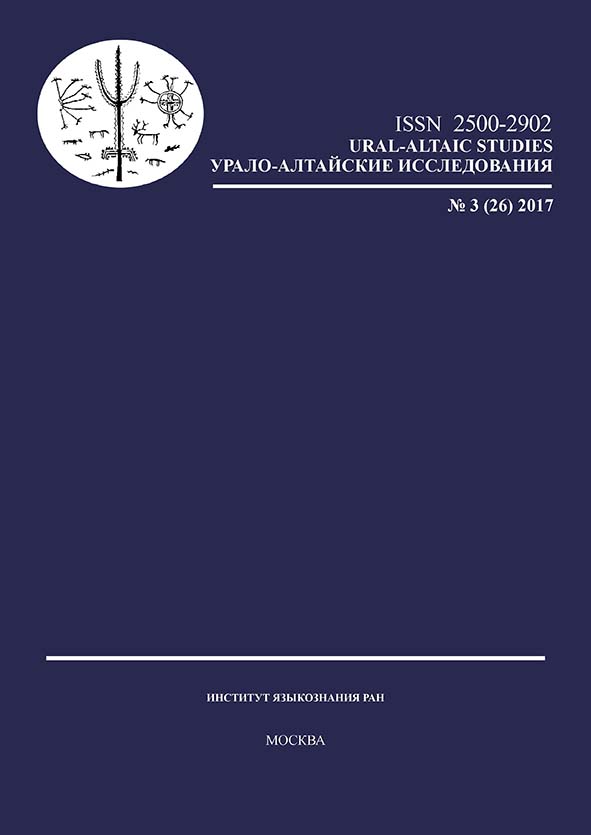Фонетические преобразования в позициях сандхи
в тувинских аналитических конструкциях
Phonetic transformations in the sandhi positions in the Tuvan analytic constructions
Author(s): Iraida Jacovlevna Selyutina, Tatiana R. RyzhikovaSubject(s): Language and Literature Studies, Phonetics / Phonology, Turkic languages
Published by: Институт языкознания Российской академии наук
Keywords: Tuvan language; adverbial participle analytical constructions; phonetic transformation; sandhi; processes of synthesis;
Summary/Abstract: The article is devoted to the study of sound transformations occurring in the triple adverbial participle analytic constructions (AC) of the Tuvan language. The analysis of phonetic changes in the position of the sandhi — external (anlaut and auslaut) and internal (morphemic boundaries) allows to make conjectures about the processes of intra-language synthesis. The results of auditive observations revealed three classes of AC, which differ in location of the external pause between words, which plays an important role in the process of phonetic changes. The most frequent phonetic change in Tuvan AC in the positions of external and internal sandhi is the loss of the affix of the adverbial participle =(y)p reduction which occurs due to the loss of its informativity as a part of AC. In the cases where this affix is stored, it mostly performs the function of an interfix. Elimination in 1st class ACs (V1 + V2 + V3) of the pauses between words, which in other classes perform a delimitative function between the components of AC, indicates greater activity of the process of synthesis of components of triple complexes of the 1st class compared to AC-2 (V1 /=/ V2 + V3) and AC-3 (V1 + V2 /=/ V3 (+ L)) classes, where the phonetic transformation are at an initial stage. In the materials on Tuvan language presented in the article various stages of the process of morphological simplification are recorded. This process is the result of truncation of some part of a complex analytic form, which some Turkic languages have already experienced.
Journal: Урало-алтайские исследования
- Issue Year: 2017
- Issue No: 03 (26)
- Page Range: 230-242
- Page Count: 13
- Language: Russian

